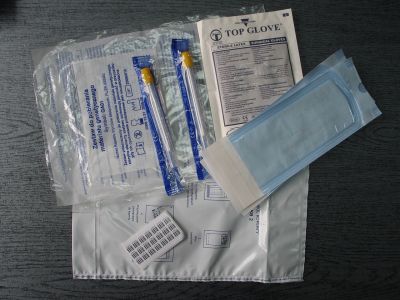Portable DNA sensor

PakietDNA
By JohnRambo PL (Own work) [GFDL (http://www.gnu.org/copyleft/fdl.html) or CC BY-SA 4.0-3.0-2.5-2.0-1.0 (http://creativecommons.org/licenses/by-sa/4.0-3.0-2.5-2.0-1.0)], via Wikimedia Commons
An EU-funded project is developing a nano-scale device that will stretch out a single DNA molecule inside a nanochannel. It will enable its visualisation without using fluorescent markers for pioneering single-molecule sensing.
Detection of changes in the transmission properties of light
(electromagnetic radiation) forms the basis of optical tools from simple
light microscopes to complicated nano-optical devices. Scientists are
now well on their way to development of a lab-on-a-chip exploiting
changes in transmission induced by the presence of a single DNA
molecule.
With EU support of the project PLASBIORES, researchers are building
on their robust technology for fabrication of integrated devices based
on wafer-scale processes. These will lead them to production of a
nanochannel equipped with a plasmonic nanoantenna on a microfluidic
device for a revolutionary new way of sensing.
Exploiting direct imprint lithography, the team has fabricated
multifunctional, multidimensional nanofluidic channels in a single step
and in just a few minutes with no alignment necessary. They have also
developed the technology to integrate plasmonic elements, specifically
plasmonic nanoantennae consisting of gold-filled nanotriangles, also
perfectly self-aligned with the nanochannels. Drilling four holes at the
ends of the microchannels enables liquid access. The polymer device
will then be bonded to a glass coverslip for characterisation.
Plasmonic nanoantennae are gaining a tremendous amount of interest,
operating much like radio antennae but at higher frequencies. When light
interacts with metal nanoparticles, in this case gold, it induces
collective oscillations of the conduction electrons. These in turn can
create useful effects. PLASBIORES researchers are exploiting the
formation of high-intensity hot spots at the nanoparticle surface to
detect single DNA molecules.
Researchers have tested both the nanochannels and the nanoantennae
separately. The nanoantennae provided an amazing signal enhancement on
the order of 104 when compared to a non-structured gold surface. Single
DNA molecules were successfully fed into the nanochannels and stretched
out via electrophoresis to a length 89 % of that predicted — one of the
largest stretching factors in the literature for single molecules in
nanochannels.
The preliminary results are extremely promising. This unique and
portable device will have major impact on the field of medicine,
particularly point-of-care applications. It will also enhance
environmental monitoring and many other fields in which biological
molecules are of interest.
published: 2015-04-07

